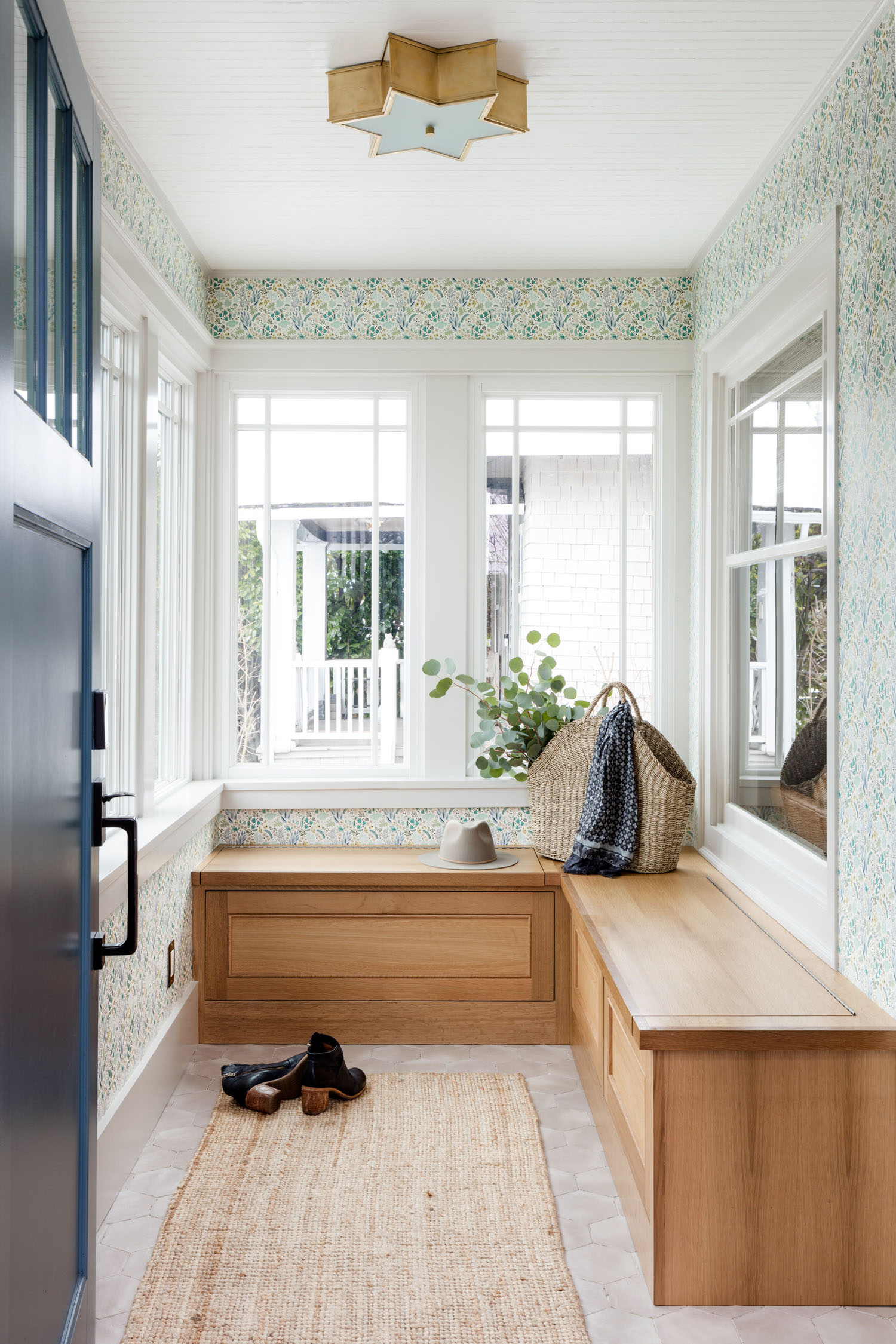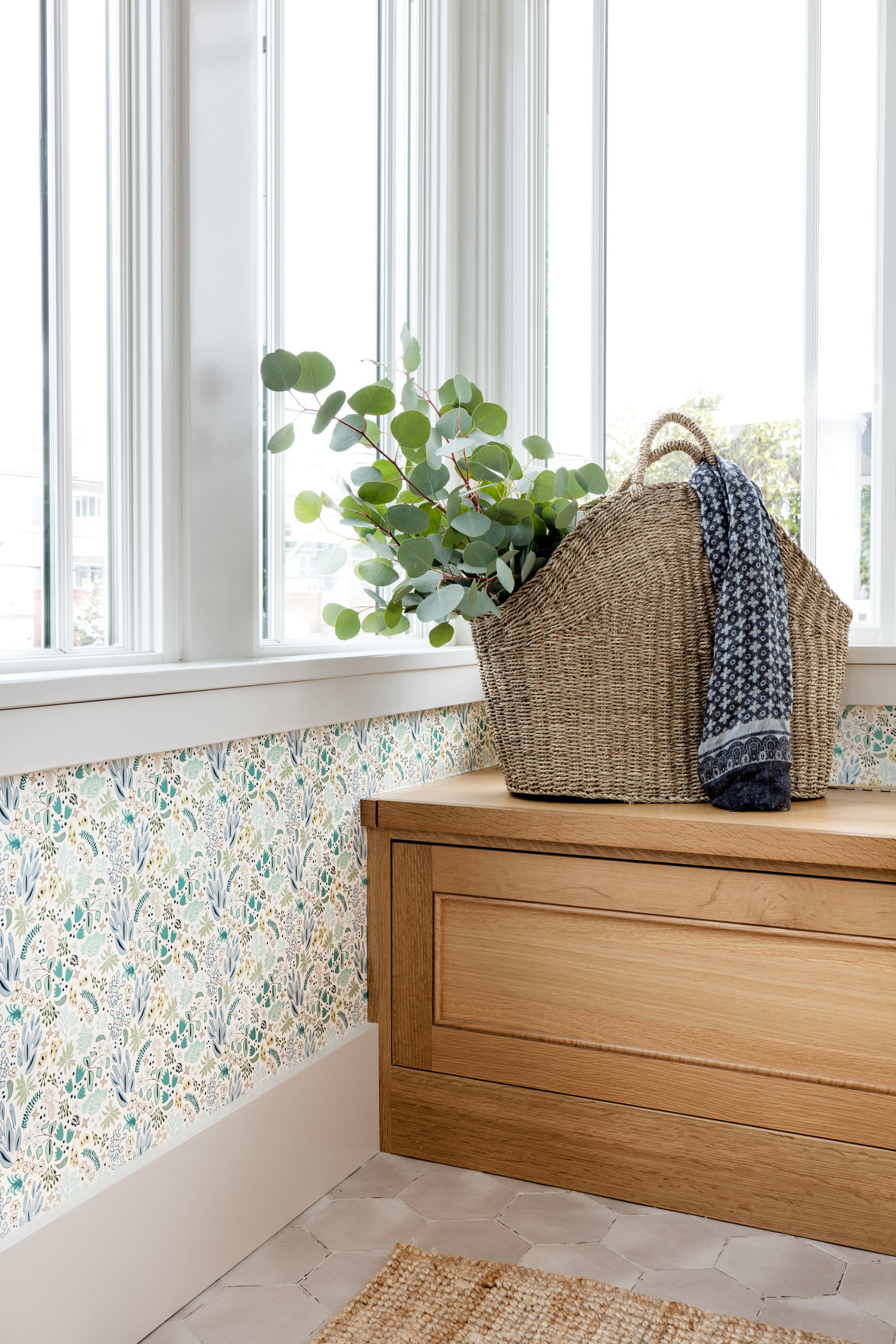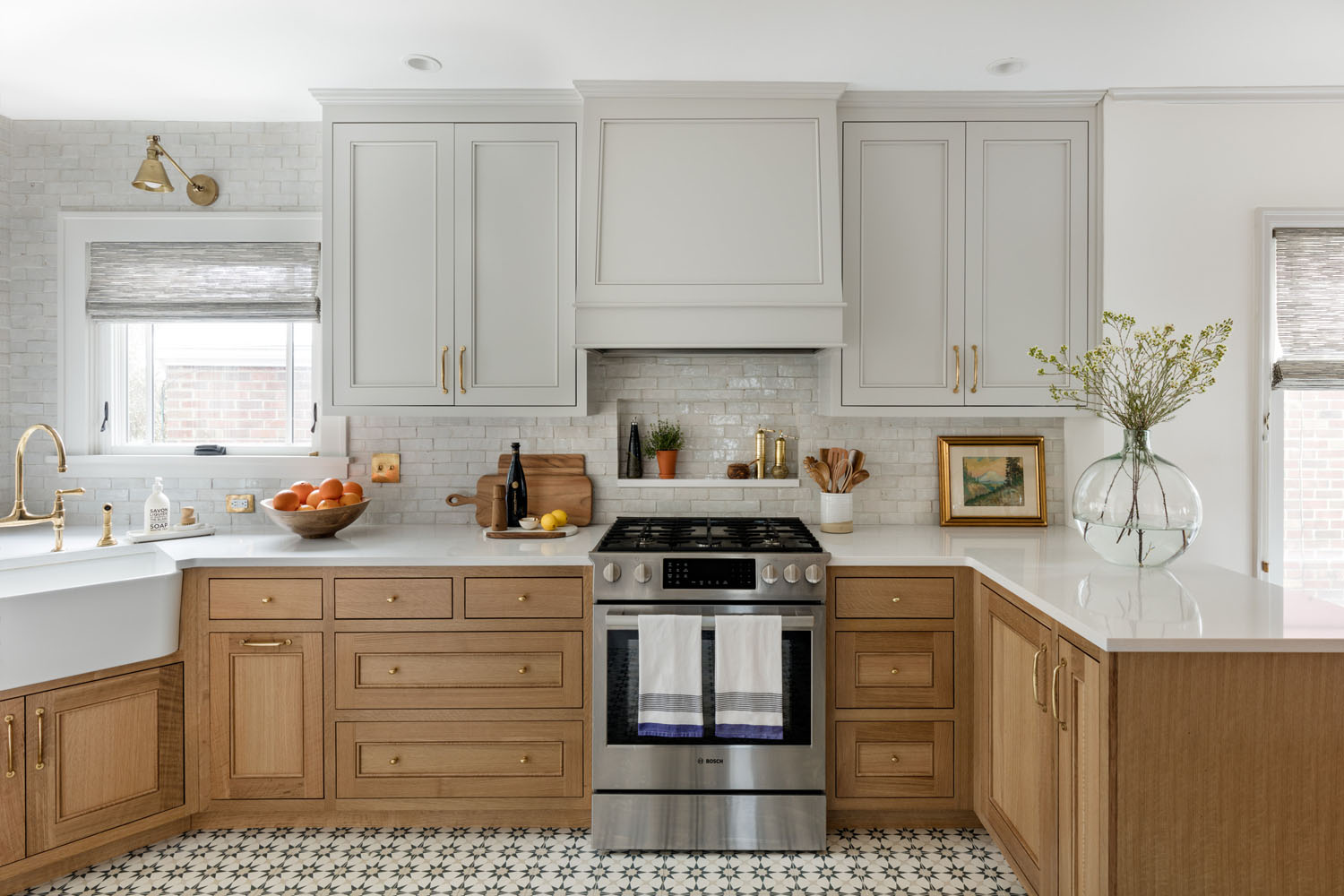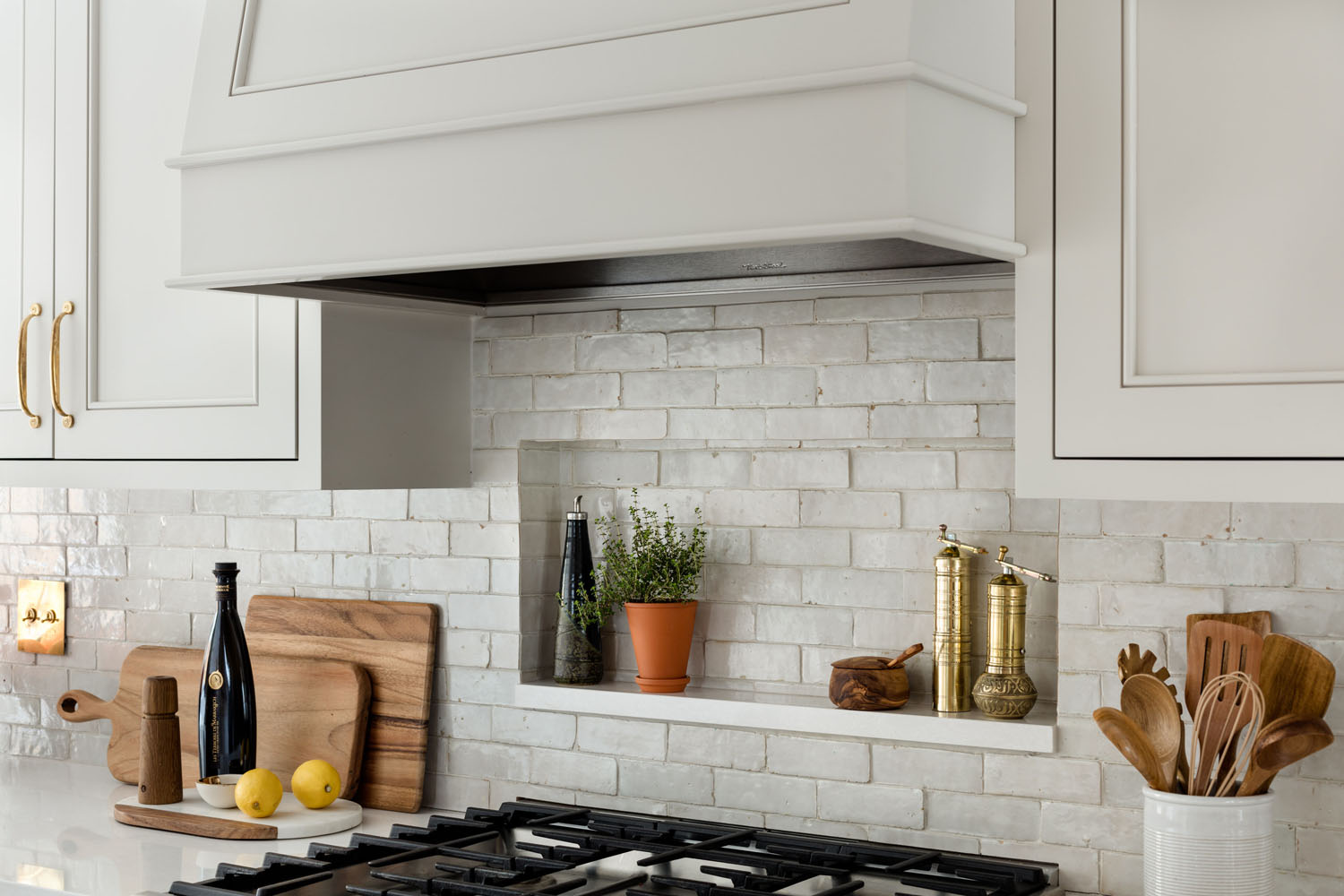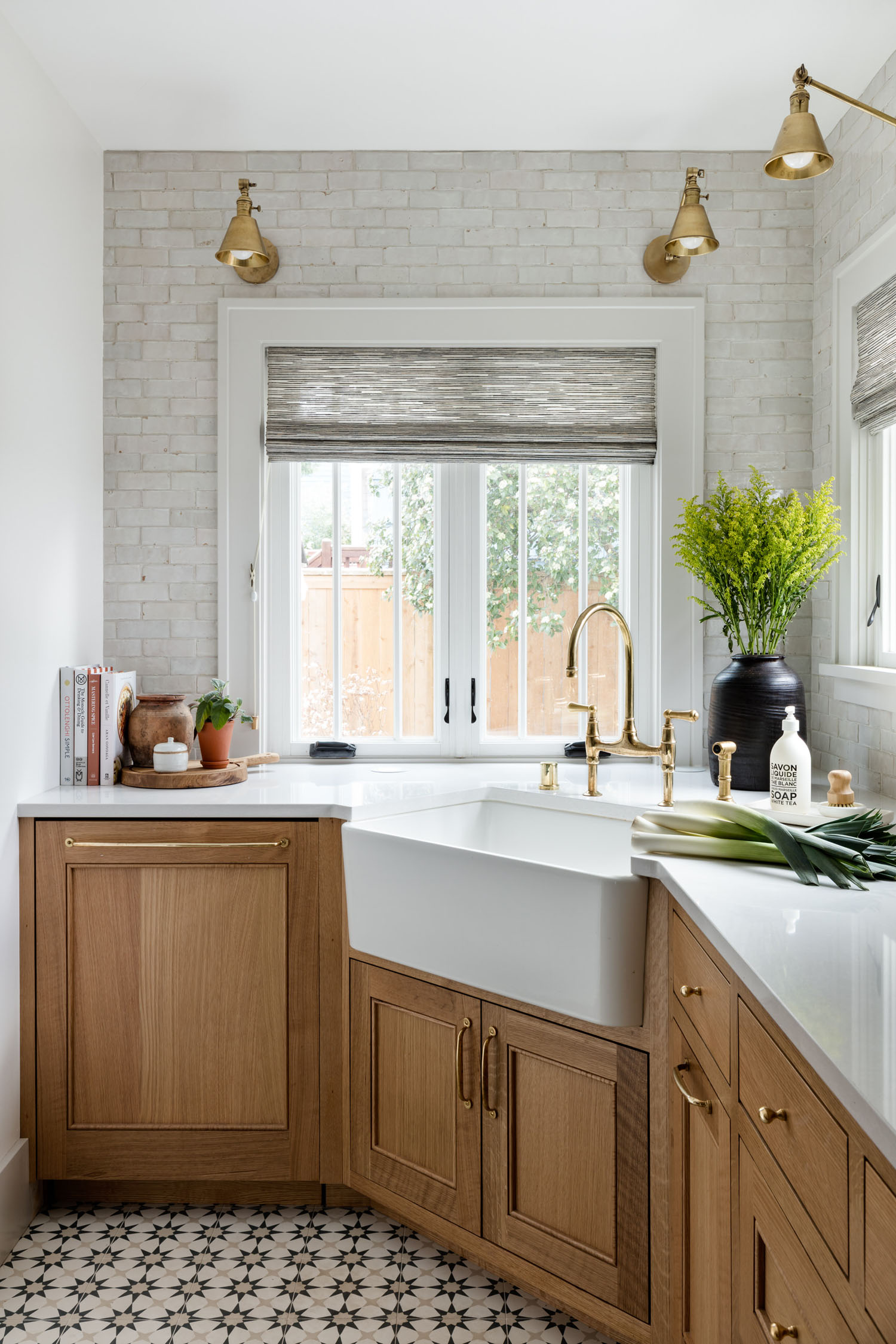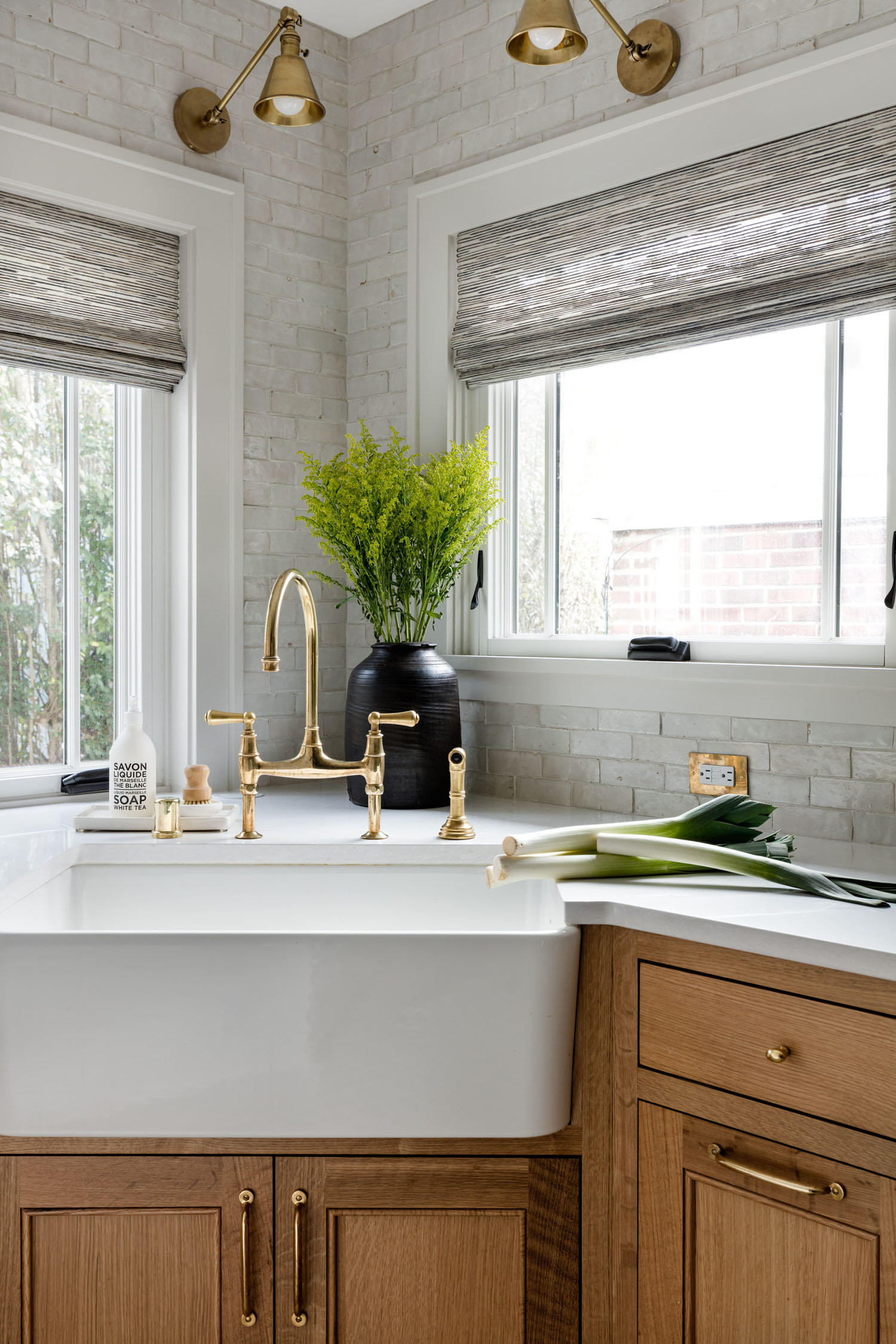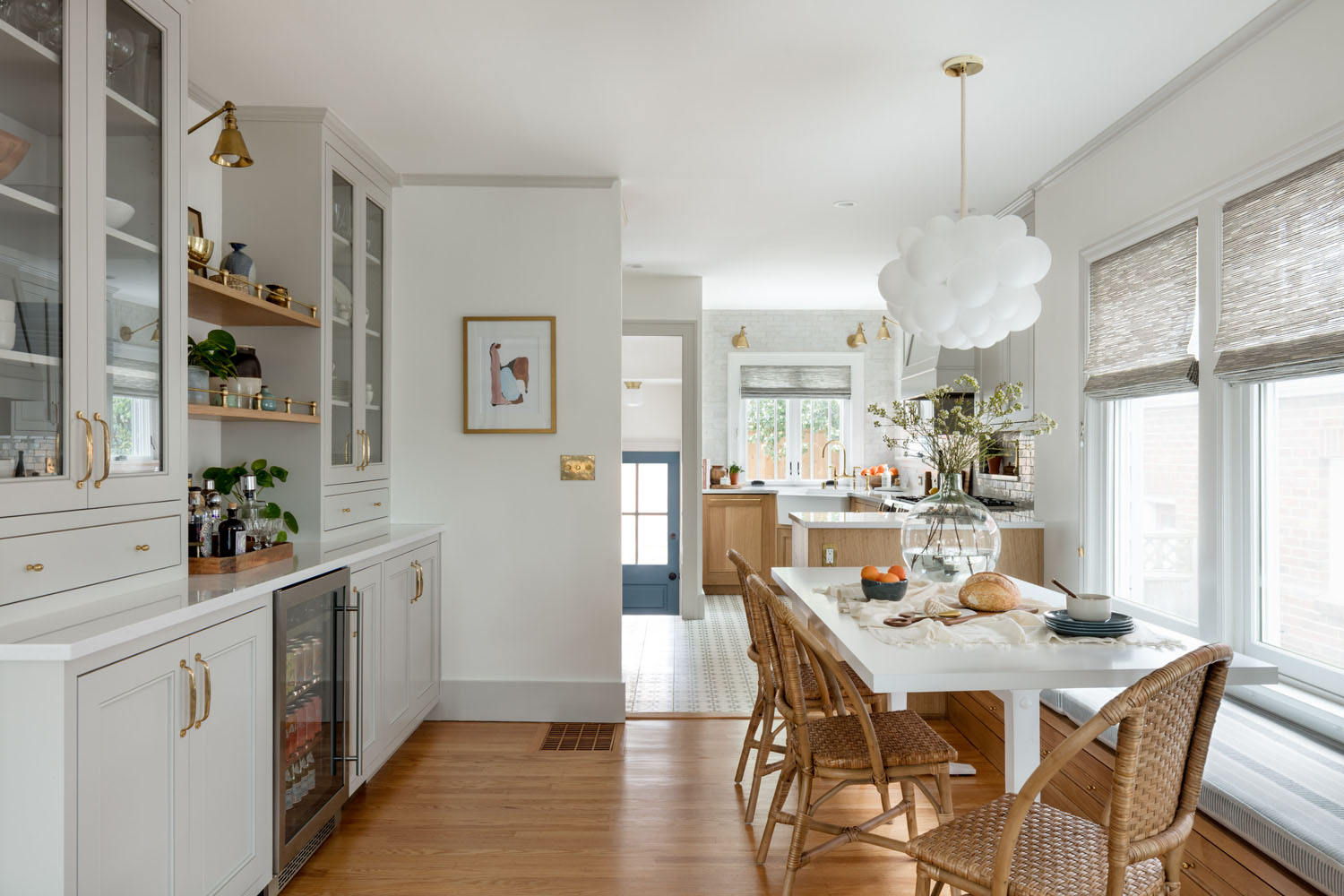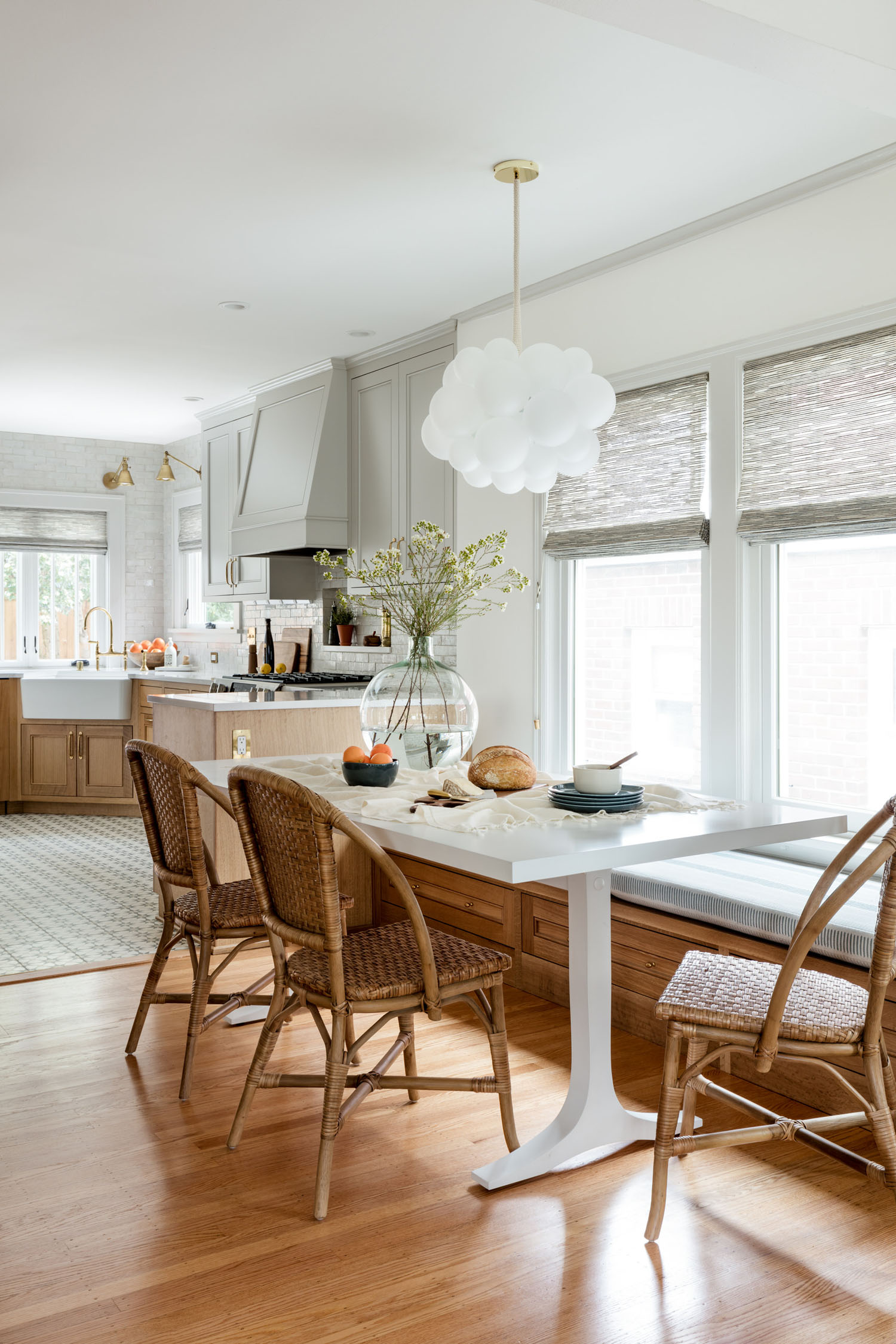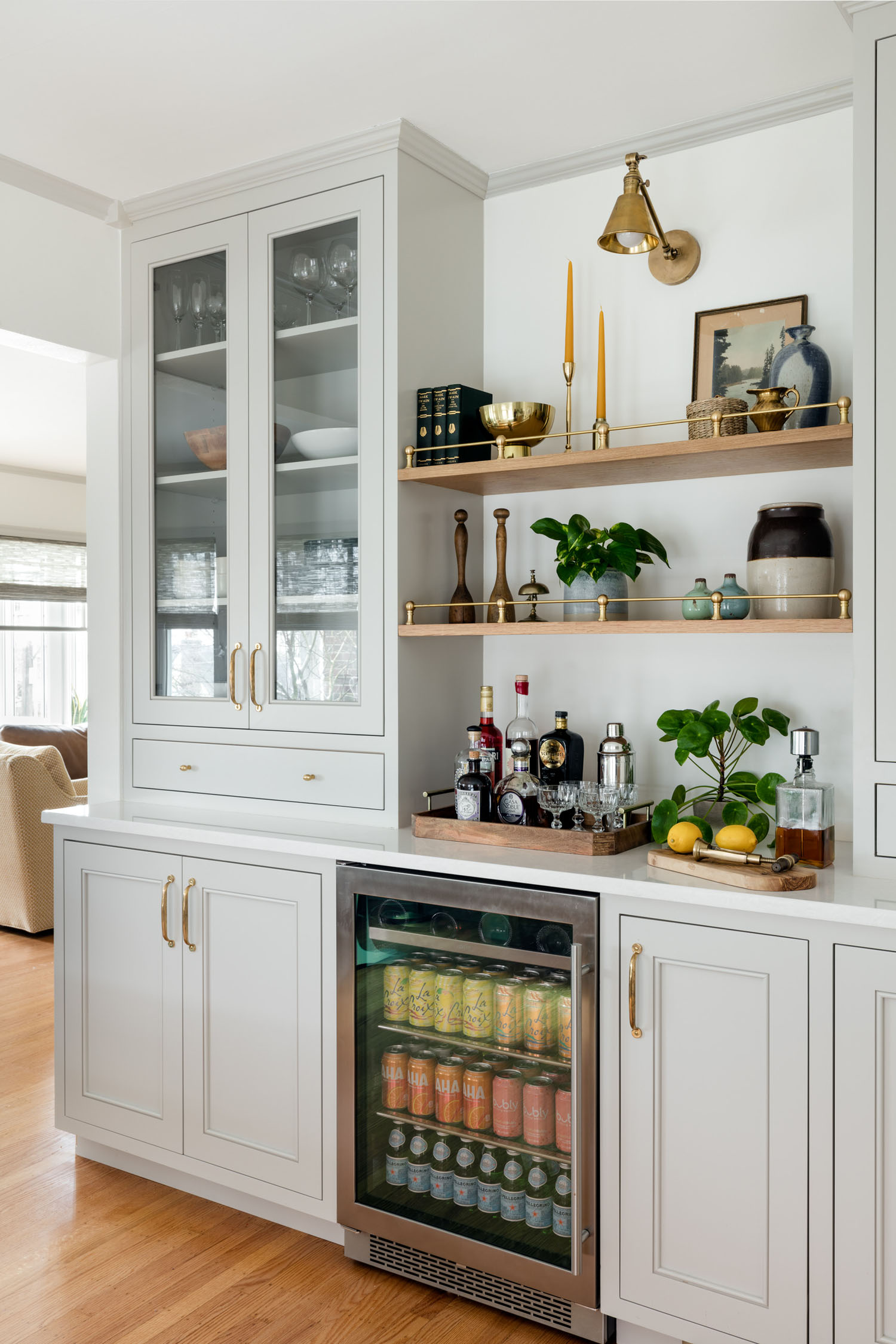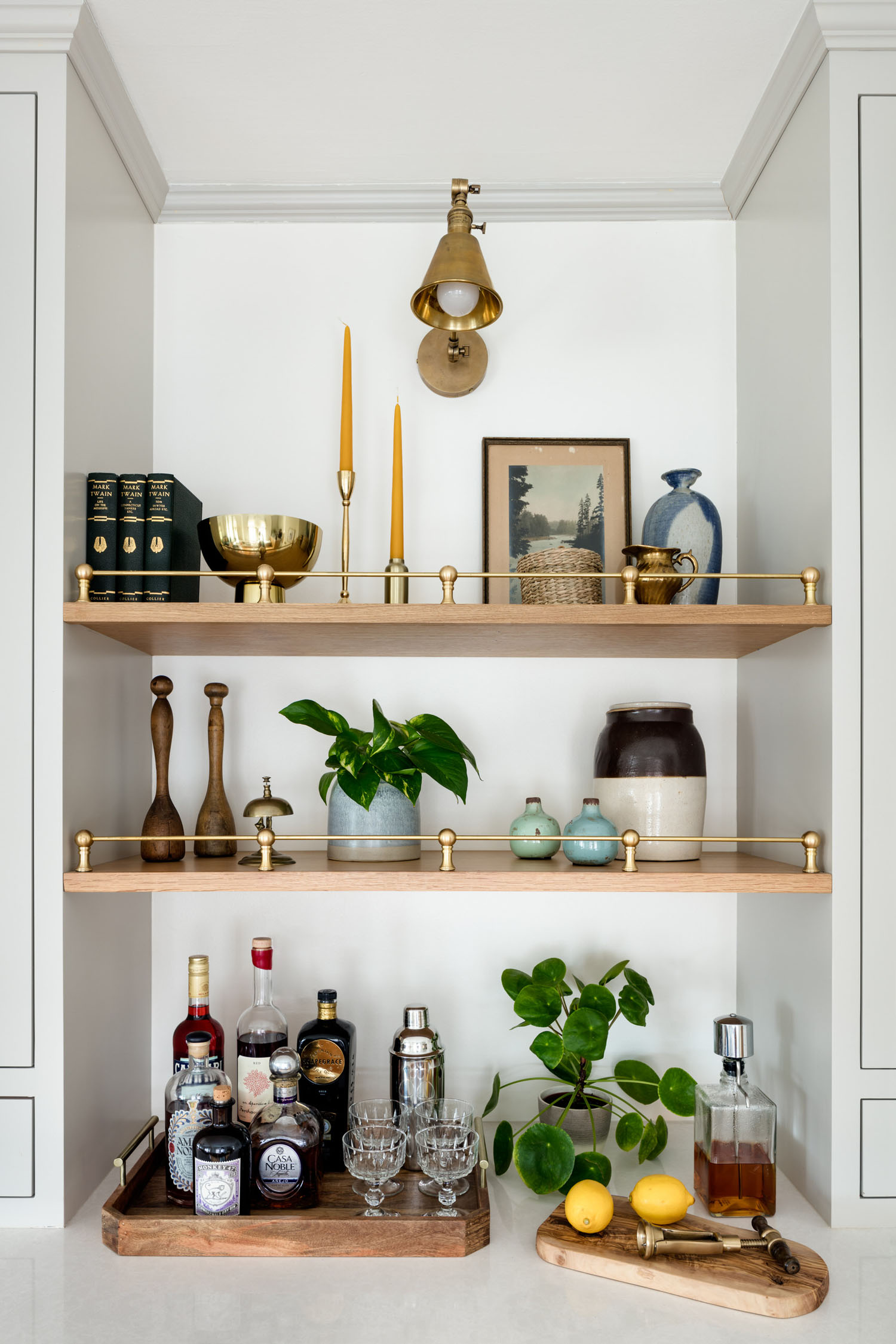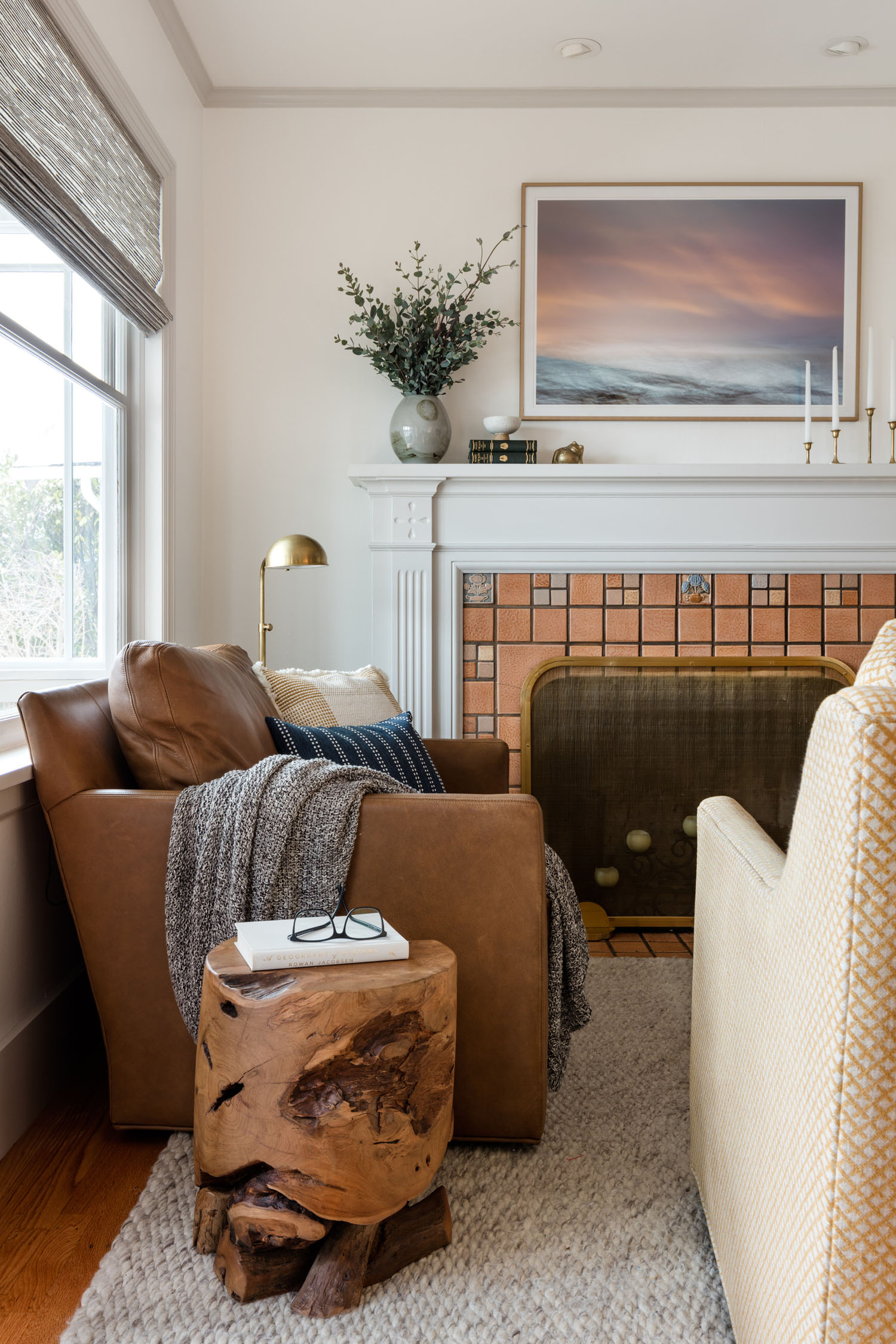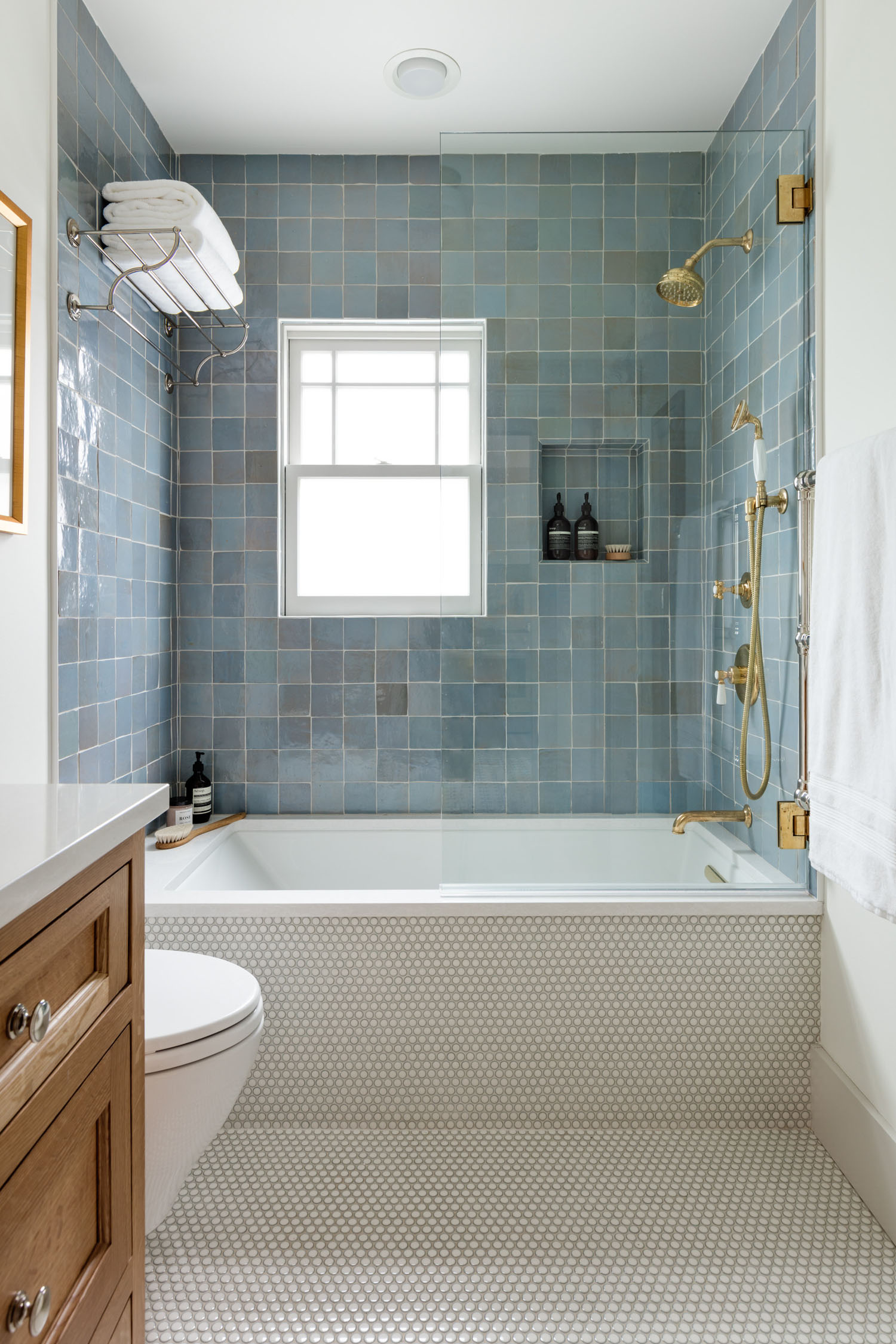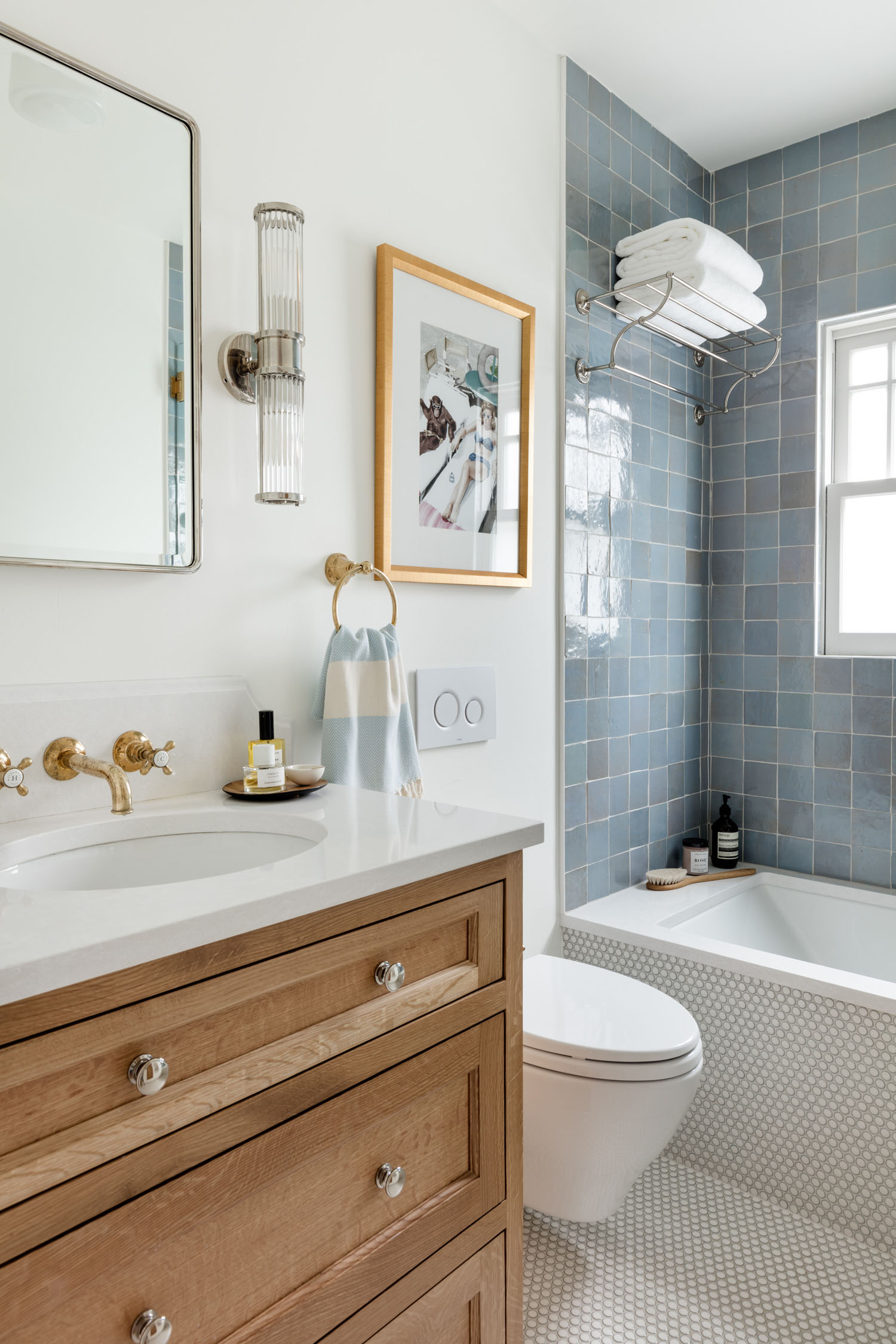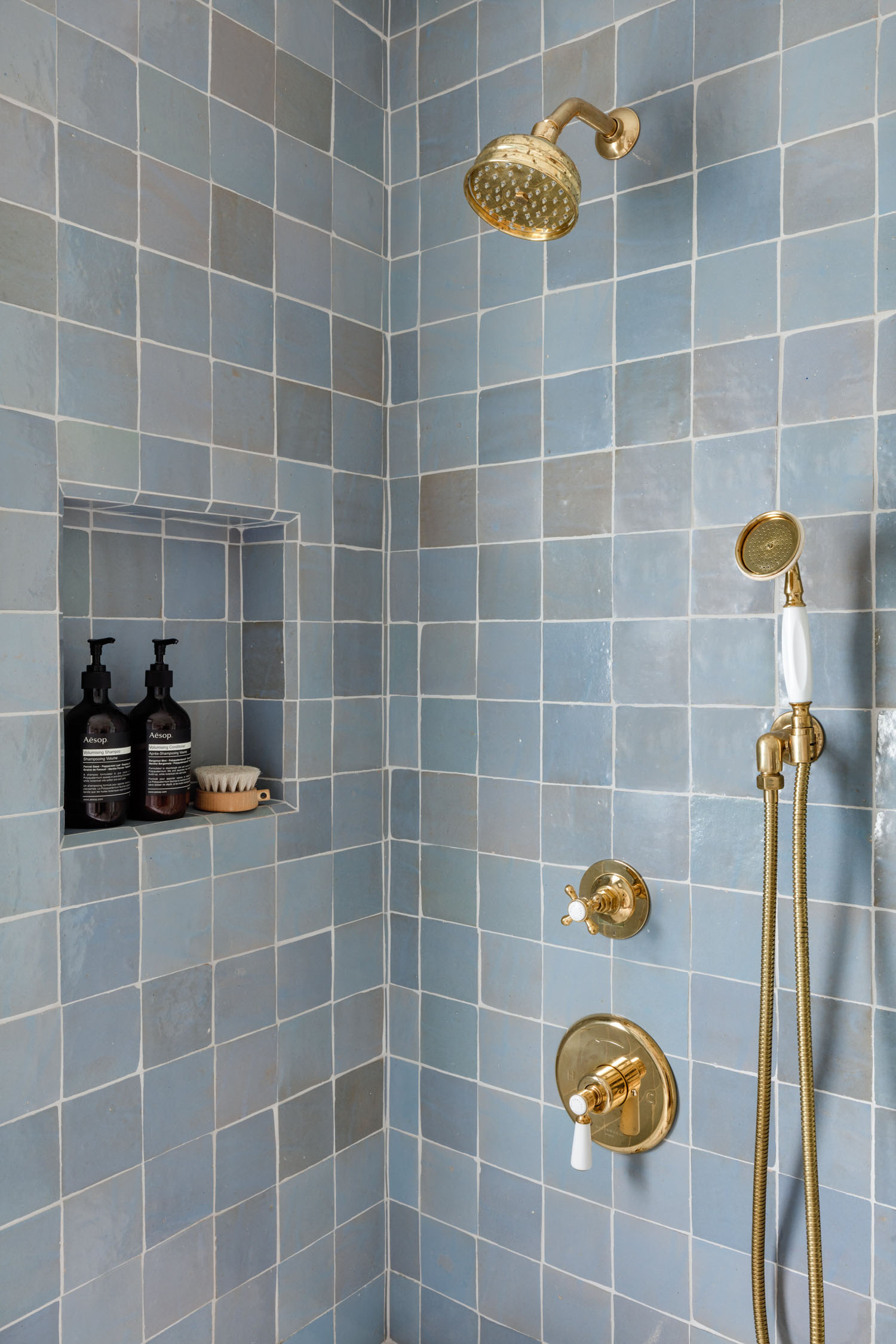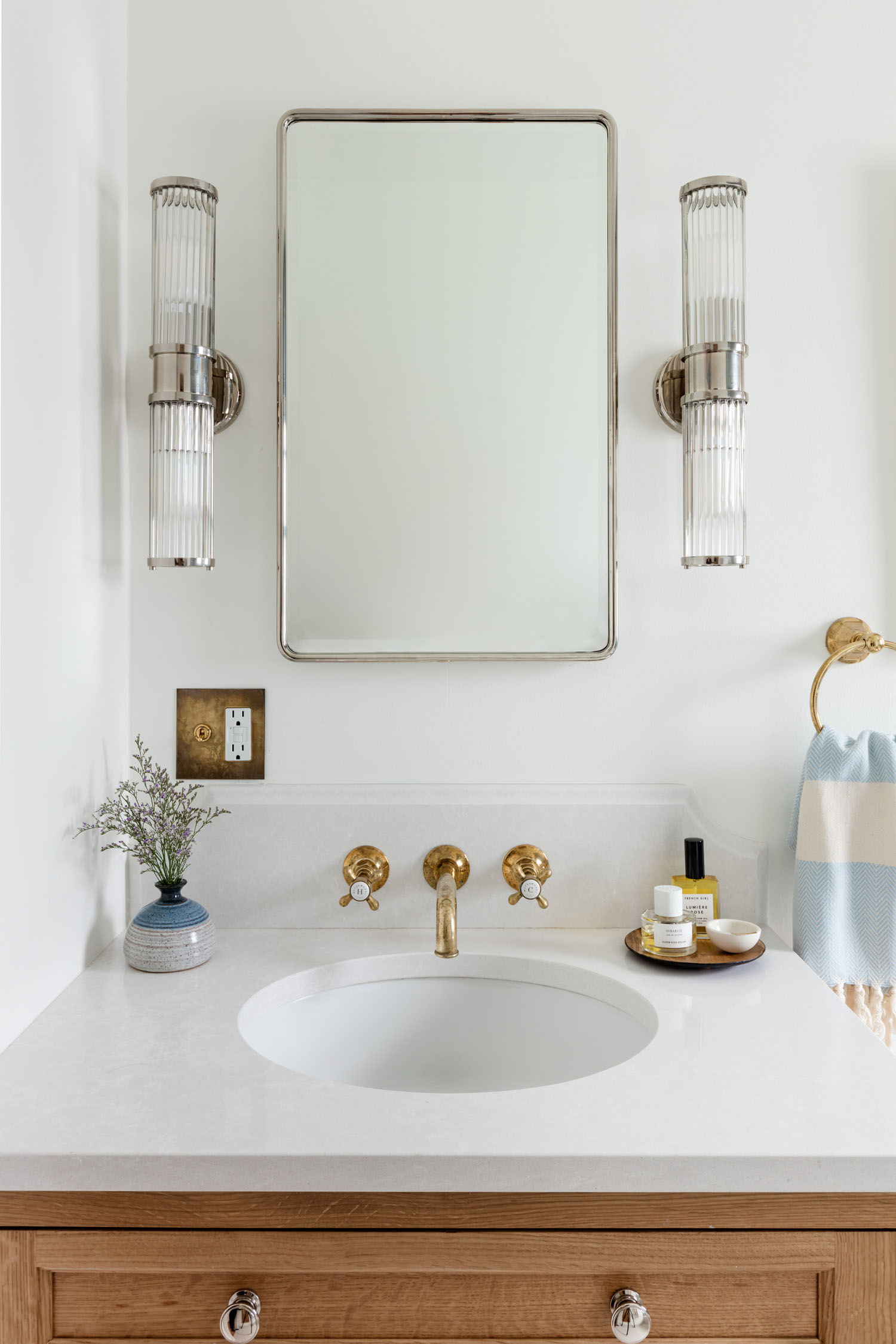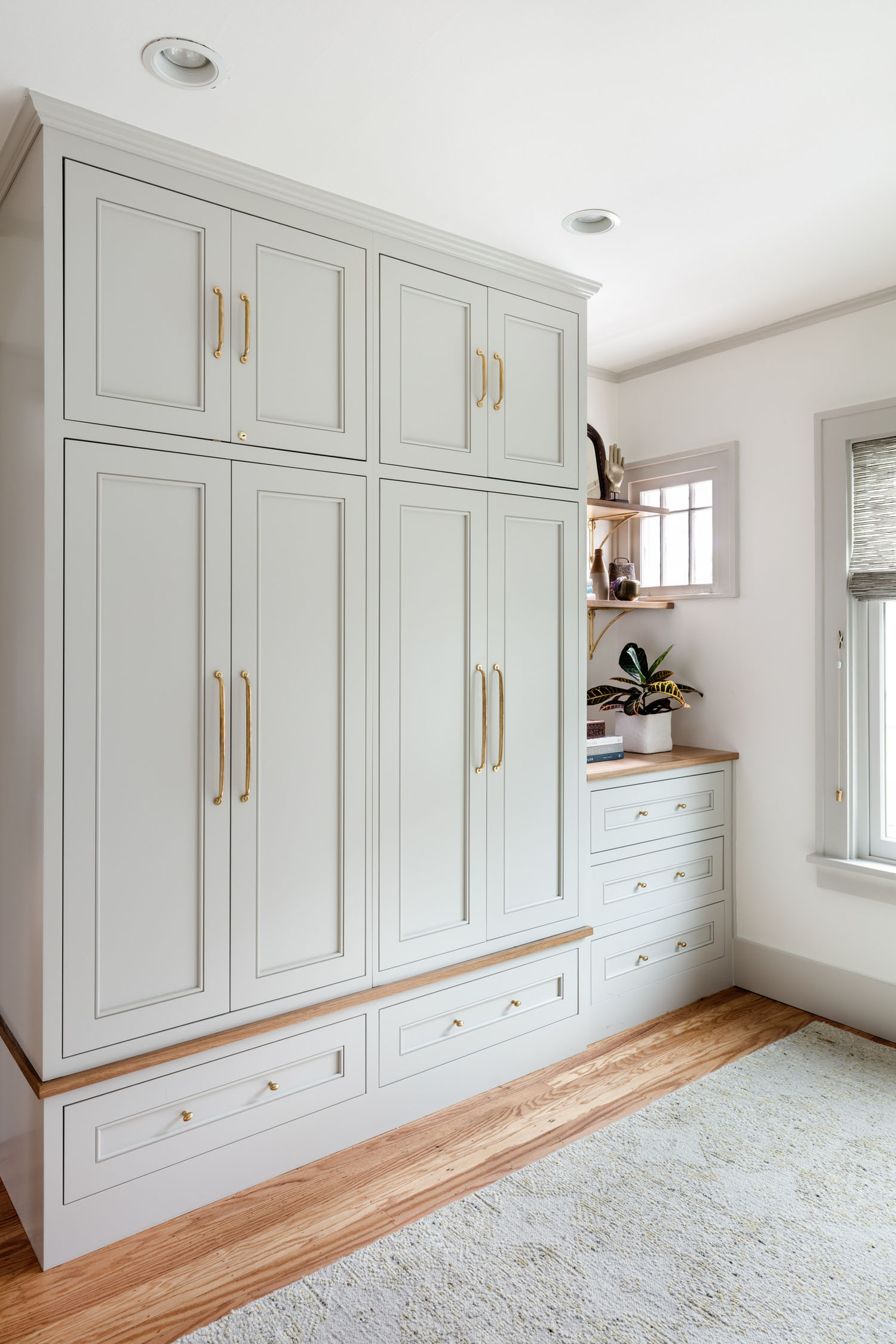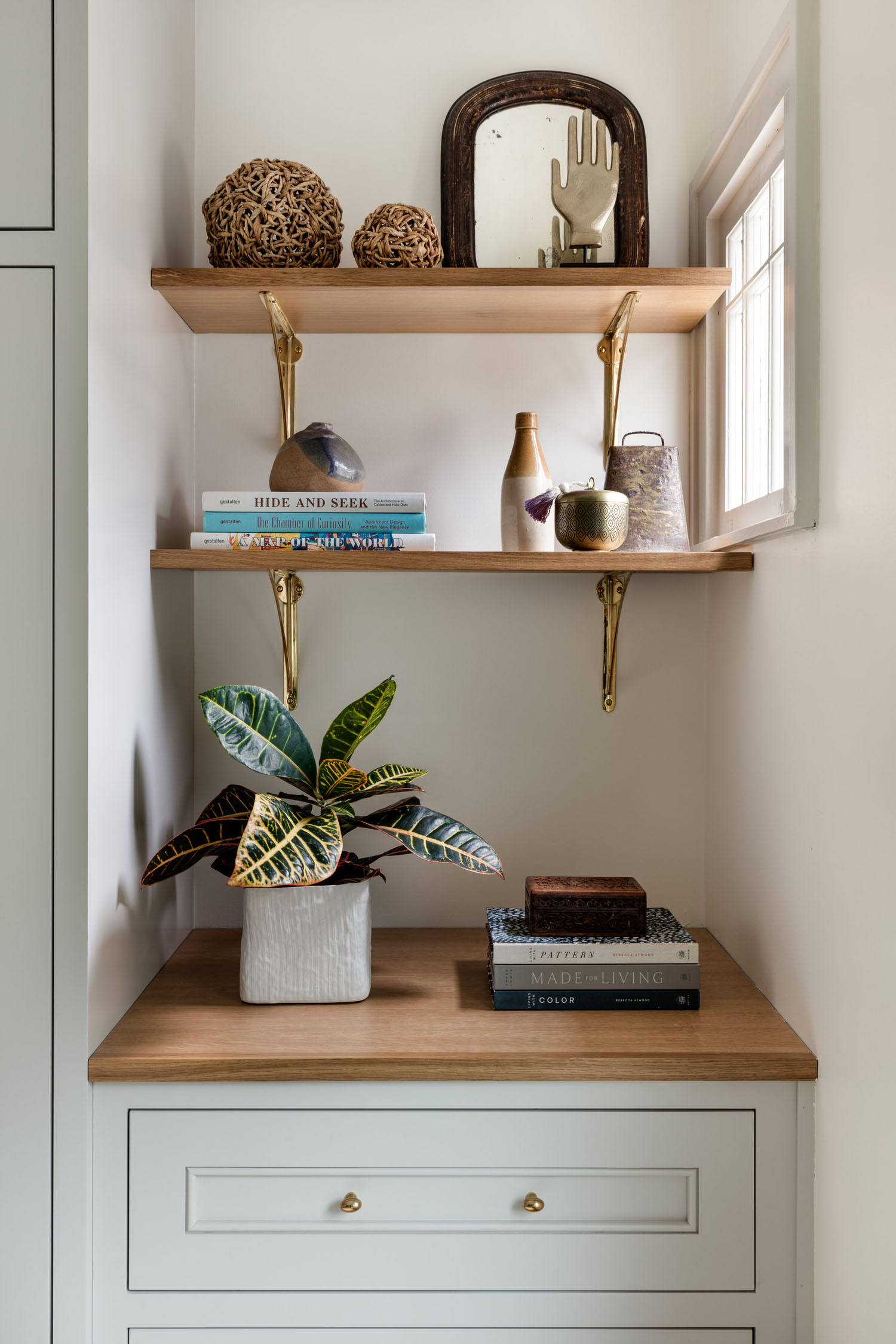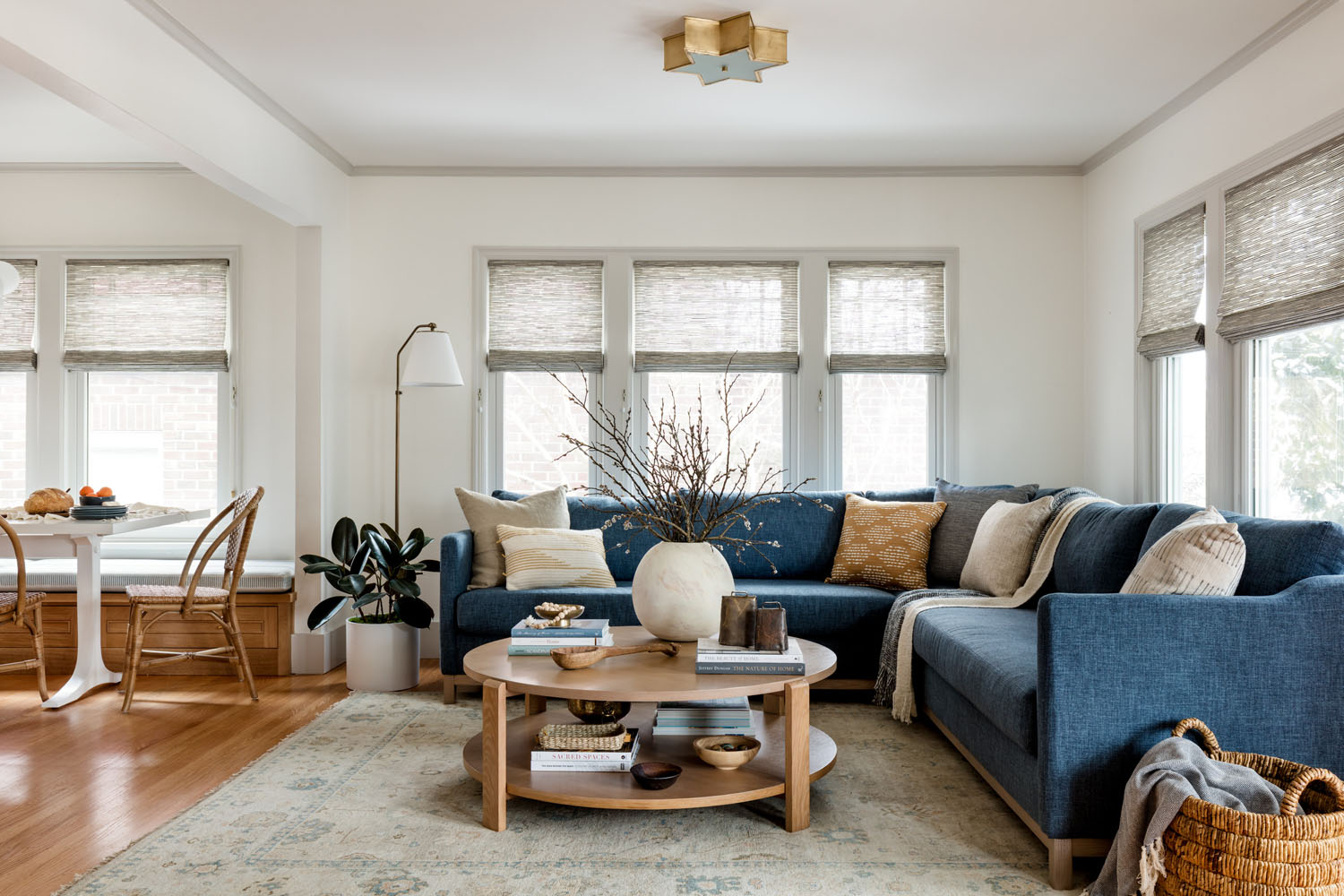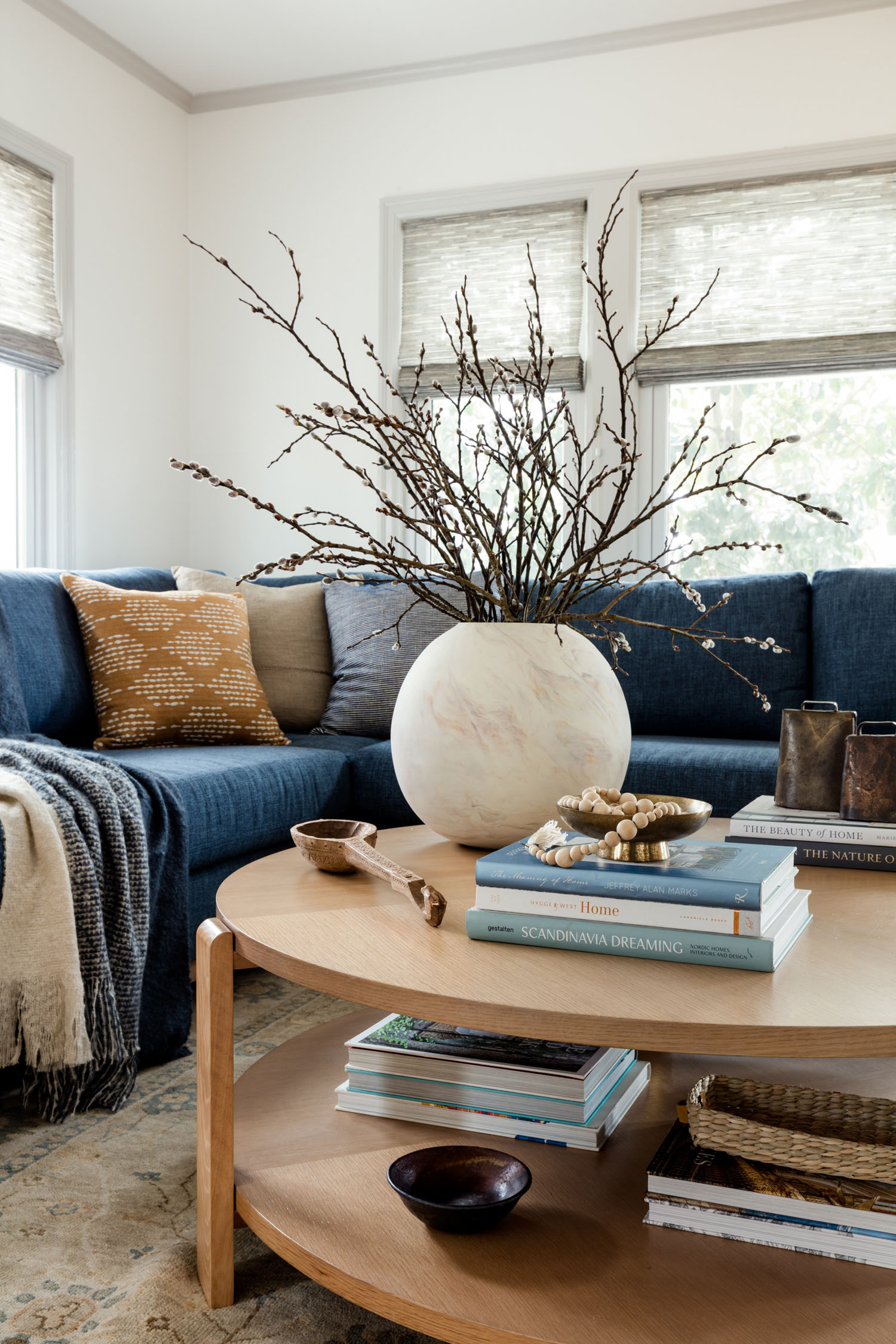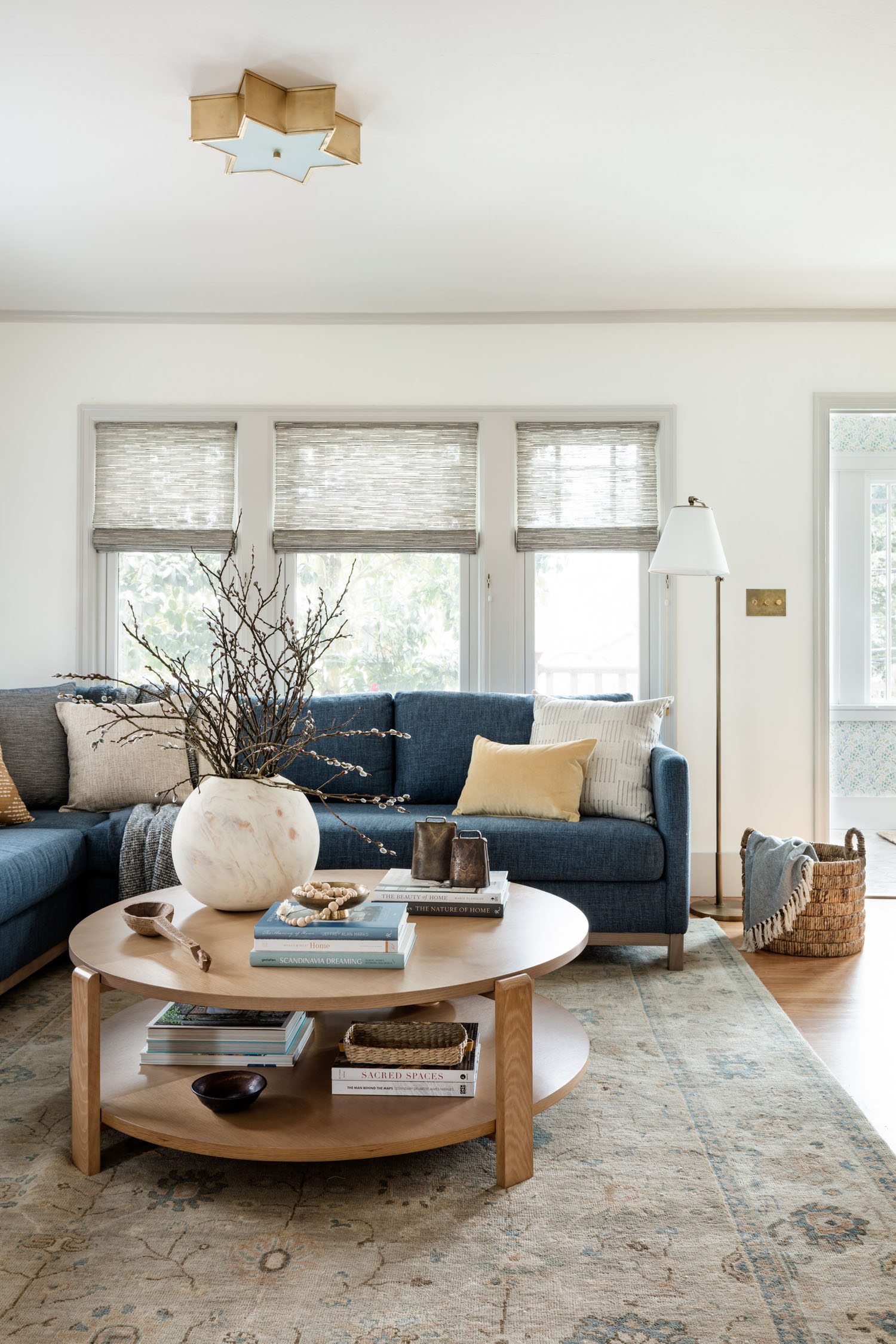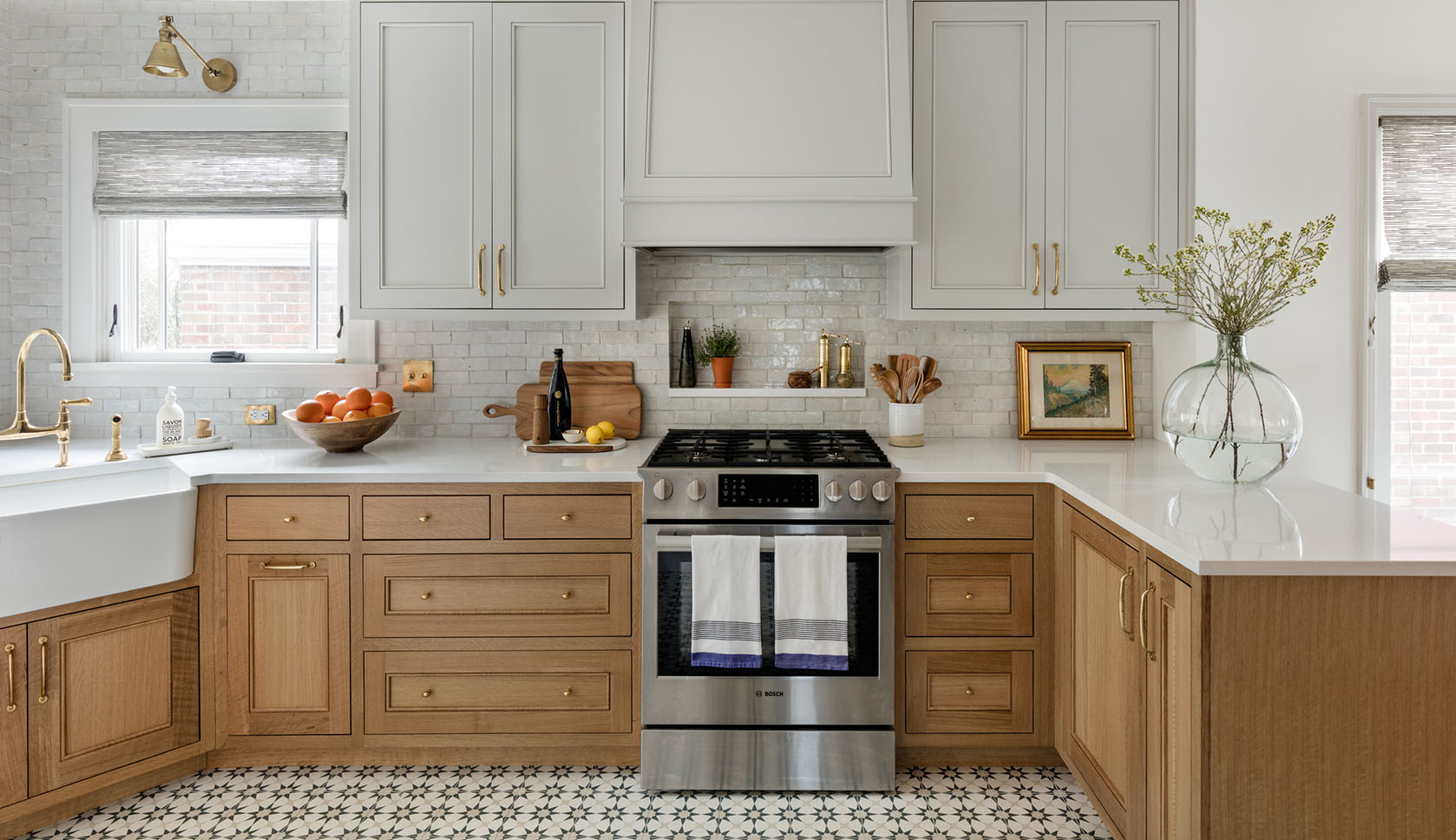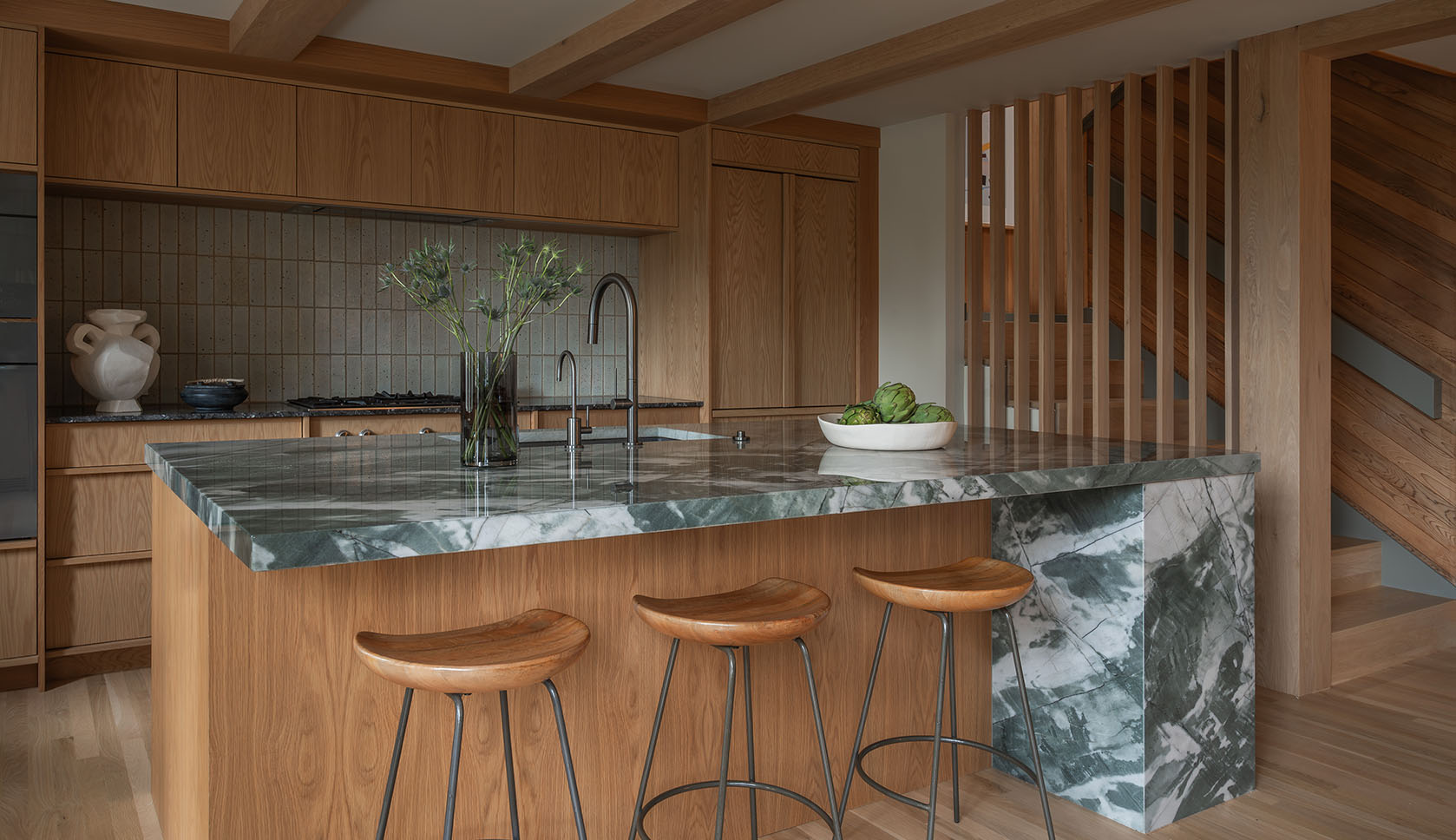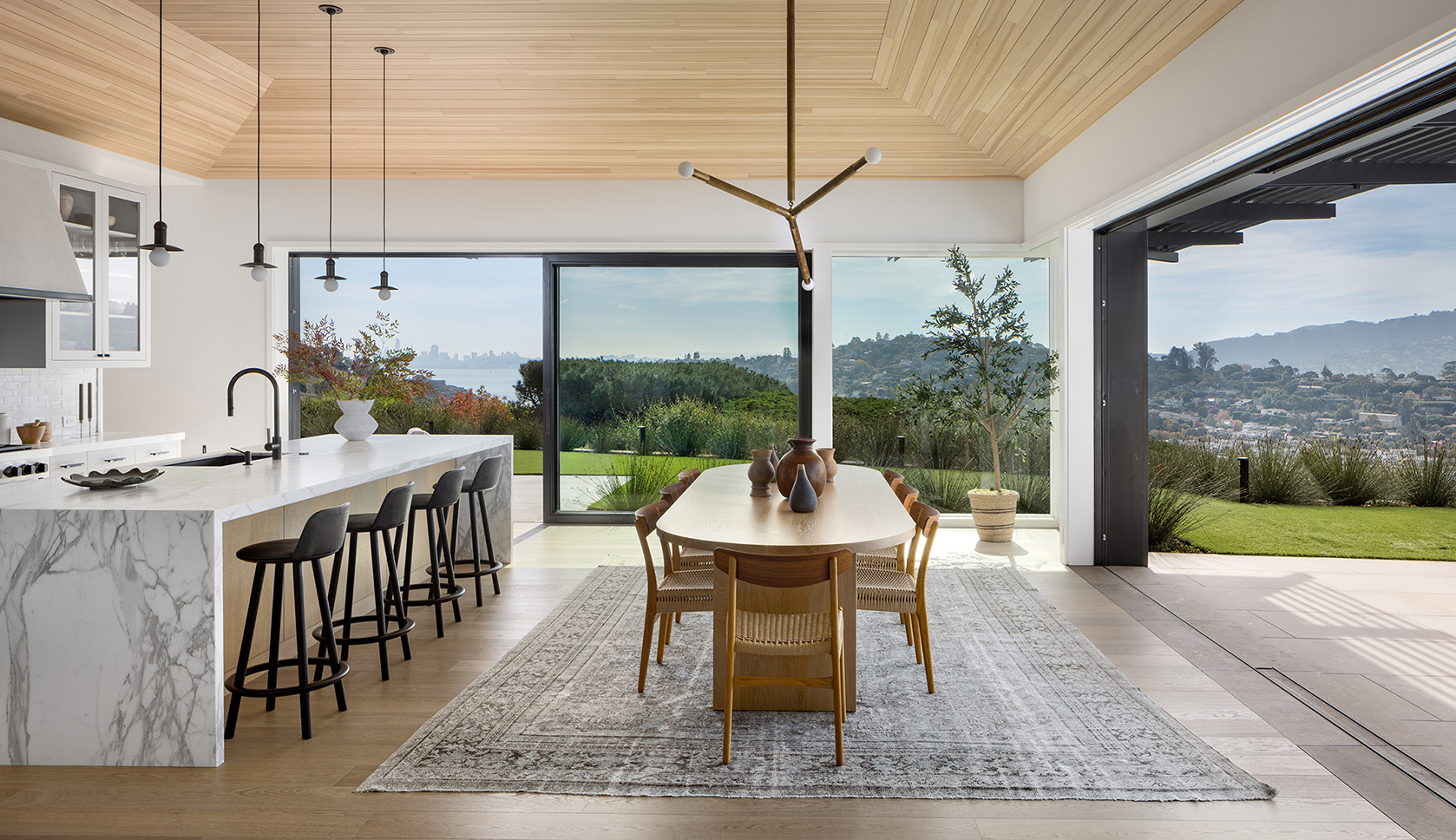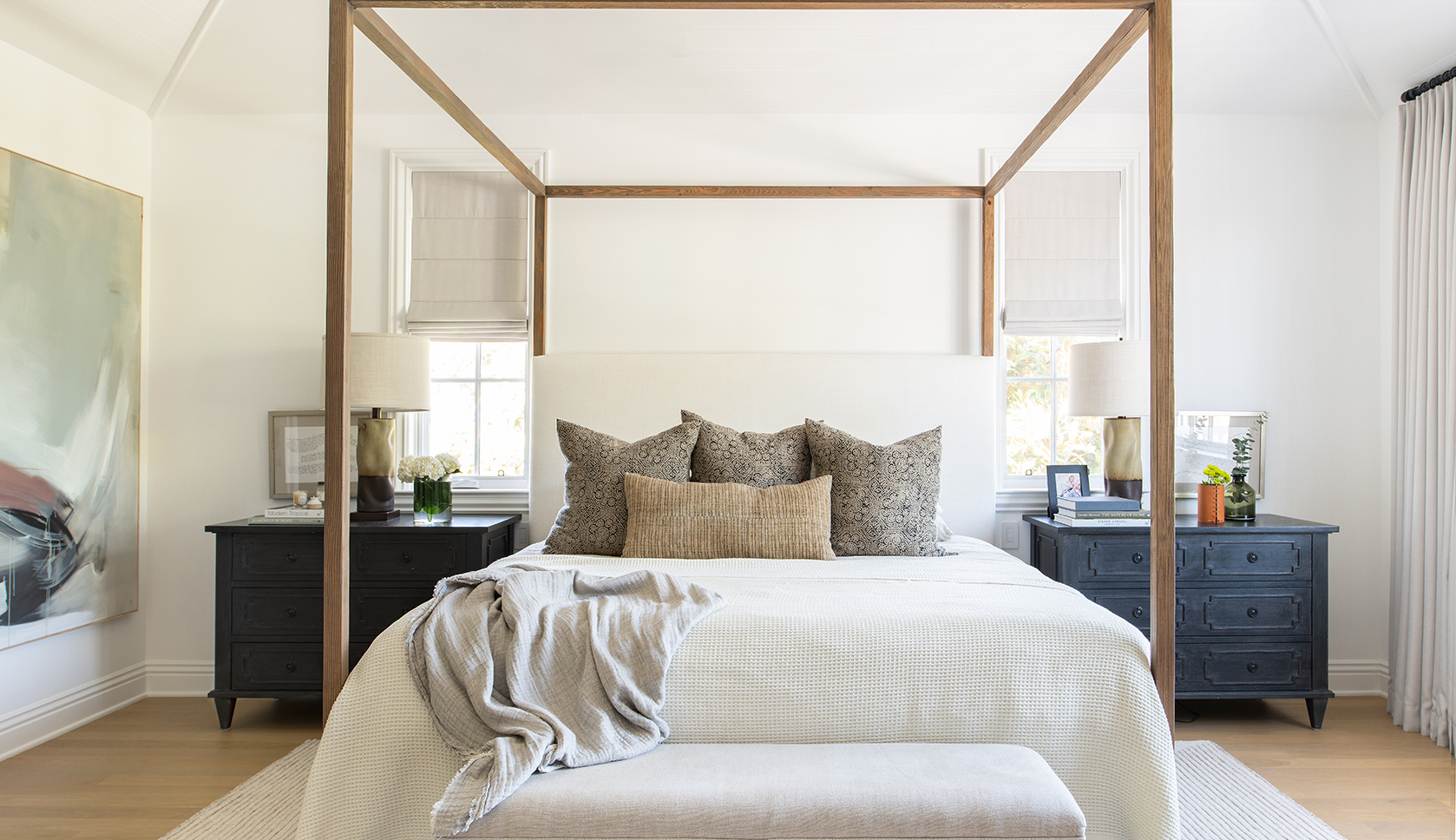Like many parts of the country, the Seattle real estate market is off the charts. Many homeowners are searching for more square footage and are left with one option: A move to the suburbs. This wasn’t in the cards for Amy Vroom’s clients, both civil engineers with a teenage son and twin, twelve-year-old daughters—it was Seattle or bust. The family was faced with the reality that the house they bought as a “starter” years prior would need to serve as their “forever home.”
What started as a modest kitchen update turned into a full-blown remodel, and the results are beautiful.
Hi Amy! We’d love to know more about this home. What makes the location so appealing?
The Maple Leaf neighborhood is nestled just north of downtown Seattle and boasts a small- town, family-friendly vibe in the heart of the city. Single family bungalows reside next to classic midcentury homes and modern new construction. It is here where my clients had purchased what they thought was their starter home back in 2003 – a 2,250 SF 1926 Craftsman located on a busy street. Three children and 15+ years later, they decided to firmly plant their roots and invest in making it beautiful and more functional for their whole family.
What were the goals for the renovation?
The original goals were simple – make the kitchen more functional with better counterspace, upgrade the appliances and maximize the storage opportunities. When I presented the first round of ideas for the kitchen layout, I shared an option where we took out part of the wall between the kitchen and the dining room. This allowed us to flip the dining room layout, connect the space with the kitchen, and add an entire wall of cabinetry. That was the tipping point for a full-scale renovation of the first floor. They could see the possibility for how that would change their living space and got excited. And then you can’t have an old bathroom next to this brand-new kitchen, so you know how the story ends…
Since they’d been in the home for a while, did they have a lot of ideas already, or lean on your design skills to help translate what details would be helpful in making it a forever home?
The homeowners really trusted me creatively throughout the whole process. We had a shared Pinterest board, but ultimately, they relied on me to bring them ideas I knew they’d love. As with many of these older Craftsman homes, there was a lack of storage that really needed to be addressed – especially with a family of five. Homeowners didn’t have as much stuff back in 1926. Adding that functionality – along with elevated design touches – was our north star.
In a few words, how do you describe the style?
Craftsman Chic, perhaps?! The homeowners are in love with all things French, so one must-have was a colorful, patterned floor you might experience in a European bistro. We fell in love with a patterned star tile which ultimately informed the color palette. We added some subtle design touches throughout the project as a nod to this affection – textural tiles in both the kitchen and the bathroom for an immediate patina, brass detailing on the bar rail and lighting, and rattan bistro chairs. Nothing over the top or too on the nose; just small moments to remind them of Paris.
This project had a few challenges. Could you tell us how you overcame a few of the hurdles?
As luck would have it, construction began a mere month before a global pandemic brought the world to a halt. The result? A family of five living – and working and doing remote school – in an under-construction home. Far from ideal. Making it even more challenging were a host of unforeseen problems beyond only having one shower for everyone. During the electrical phase, we discovered a lot of shortcuts were taken in previous remodels that lead to an unplanned overhaul of knob-and-tube wiring and weeks of additional work. The first contractor was also fired, delaying the process even more. In the end, it was the right decision as the tiling and finish work was done beautifully and on schedule.
How long did the project take, and what did the family say when they saw the finished space?
The project took about 10 months from construction to final furniture install. In the end, it was all worth it. The biggest transformation is how the first floor is so much more connected than before, allowing my clients to spend time together in that whole space. Whether it’s cooking in the kitchen while someone is hanging out in the dining room or connecting a disjointed living room with an additional seating area – it now feels as one. They love how the remodel has truly made it their home.
